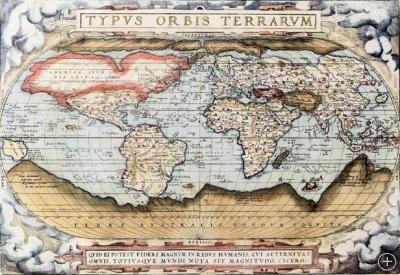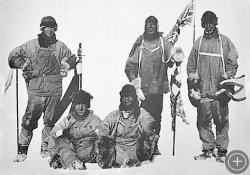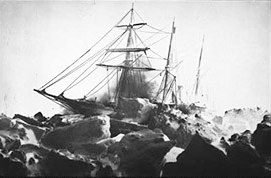Antarctic Exploration

A crate from Robert Falcon Scott’s Terra Nova expedition still sits in his hut at Cape Evans, Ross Island.
Long before anyone ever set eyes on Antarctica, many were sure it was there. Belief in a Terra Australis Incognita—“Unknown Southern Land”—first took hold among the ancient Greeks. Great believers in symmetry, the Greeks were convinced that the great landmass in the Northern Hemisphere would have to be balanced by an equally great landmass in the Southern Hemisphere.
Confirmation of the southern continent was long in coming; Terra Australis remained incognita for centuries. Captain Cook set out on a massive three-year search for it in 1772. After being driven back north again and again by pack ice, Cook concluded that if there was a southern continent, it wasn’t worth getting to.
Cook unwittingly sowed the seeds of future exploration, however, with his detailed reports of ample seal and whale populations in the Southern Ocean. Hunters flocked to the area and drove seal populations to near extinction. In 1821, a seal hunter driven off-course by a violent storm was the first to land on Antarctica. With seal populations waning, however, interest in exploring the high southern latitudes waned as well.
But in the late 1800s, a frenzy of whale hunting in the Southern Ocean spurred a frenzy of exploration; the “heroic age” of Antarctic exploration began. Akin to the “space race” of the 1960s, countries vied to be first to explore the icy continent, and reaching the South Pole became a worldwide obsession. A team led by British explorer Robert Scott came within 463 miles (877 km) of the pole in 1902. Another British team, this time led by Ernest Shackleton, came even closer in year 1908, but was forced to turn back just 97 miles (180 km) from the goal.
Traveling by dogsled, a Norwegian team led by Roald Amundsen was the first to arrive at the South Pole on December 14, 1911. A competing British team led by Scott arrived just a month later, greeted by the demoralizing site of the Norwegian flag. Plagued by accidents and storms, and short of food, all five members of the Scott team perished on the return trip.
Ernest Shackleton led a later ill-fated effort to traverse the entire continent by dogsled in 1914. Before even landing, the Endurance was trapped and crushed by pack ice, leaving the crew to winter over on the ice. Shackleton and five others set out for help in a tiny lifeboat, braving 100-foot (30 m) waves in the Southern Ocean, securing a rescue by whalers four months later. Miraculously, all survived.

Admiral Byrd, just prior to the South Pole flight of 1929 with a stone from former pilot Floyd Bennett’s grave. Byrd dropped the stone, wrapped in the small American flag, from the plane when they were over the South Pole, in honor of his pilot of the North Pole expedition of 1926.
The onset of World War I cooled interest in Antarctica, but exploration began anew with the advent of the airplane. American pilot Robert Byrd was the first to fly over the South Pole in 1929 and made repeated flights over the continent during the 1930s, 40s, and 50s. Scientifically minded, Byrd conducted many experiments in his Antarctic travels, setting the precedent for Antarctica as a land devoted to scientific research.
After World War II, countries around the globe scrambled to establish footholds—and claim territory—on Antarctica. A flurry of base-building ensued. Many bases were also built in anticipation of the 1957–1958 International Geophysical Year (IGY). U.S. base-building efforts centered on McMurdo Station (1955) and the Amundsen-Scott South Pole Station (1957). Tensions over territorial claims led to the signing of the Antarctic Treaty in 1959, establishing Antarctica as a place for only peaceful, scientific purposes, and excluding military or mining activities.
Today, exploration of Antarctica is still mainly scientific, though tourists are “exploring” the continent in increasing numbers. In 2007, 46,000 tourists visited Antarctica, mostly on cruise ships. Fearing disruption of the breeding sites of penguins and other wildlife, some are calling for tighter limits on tourism to reduce environmental impact.












